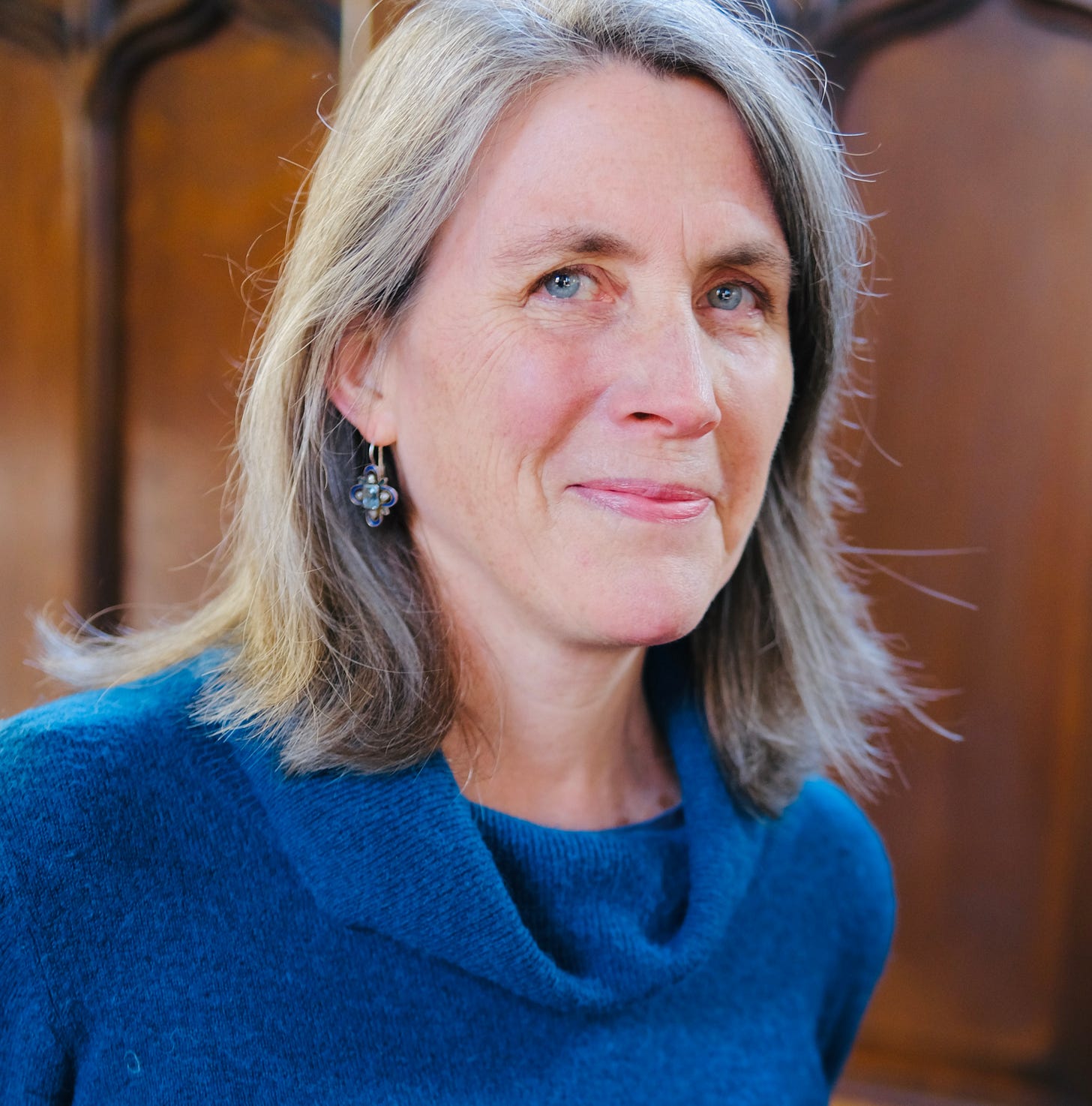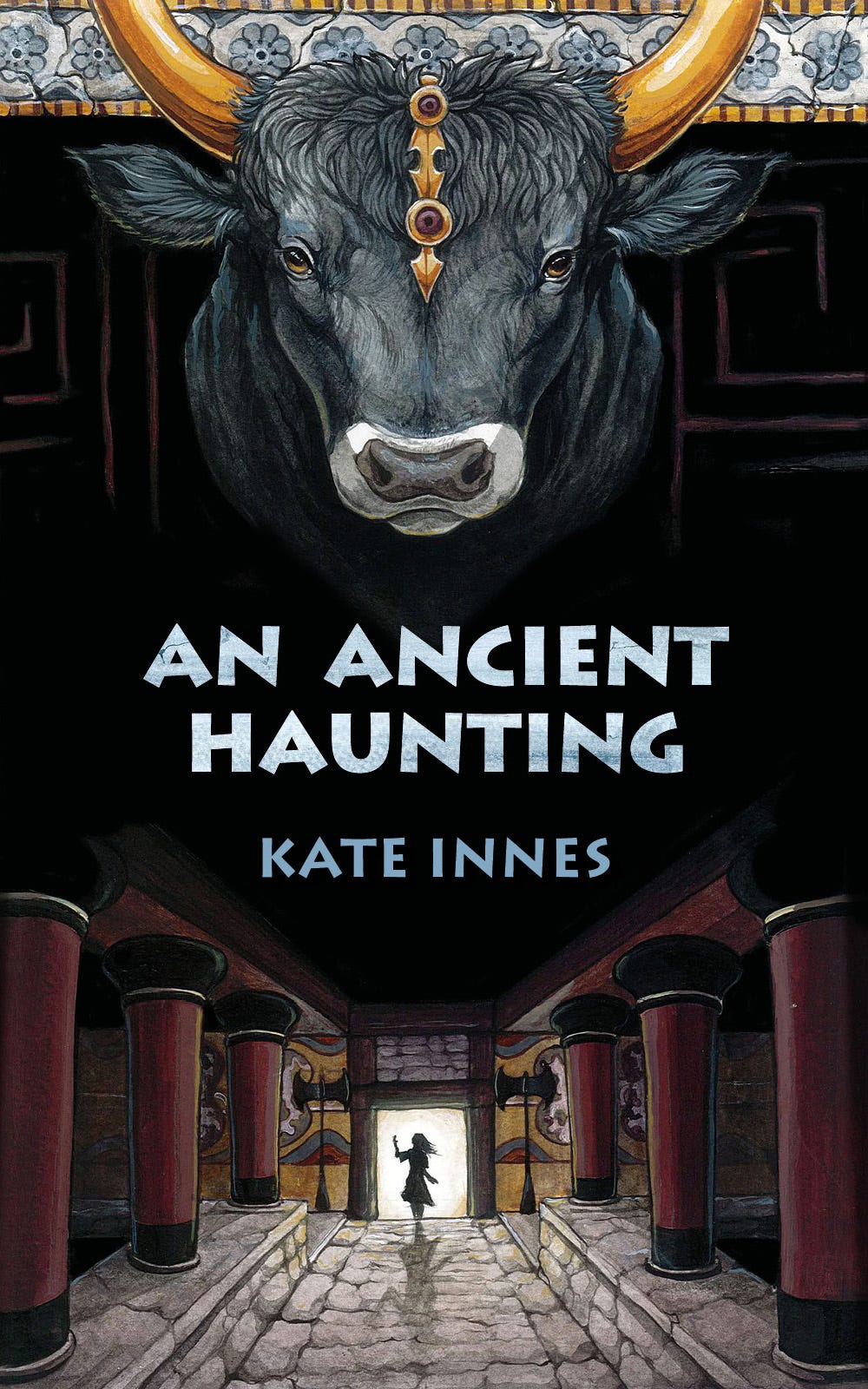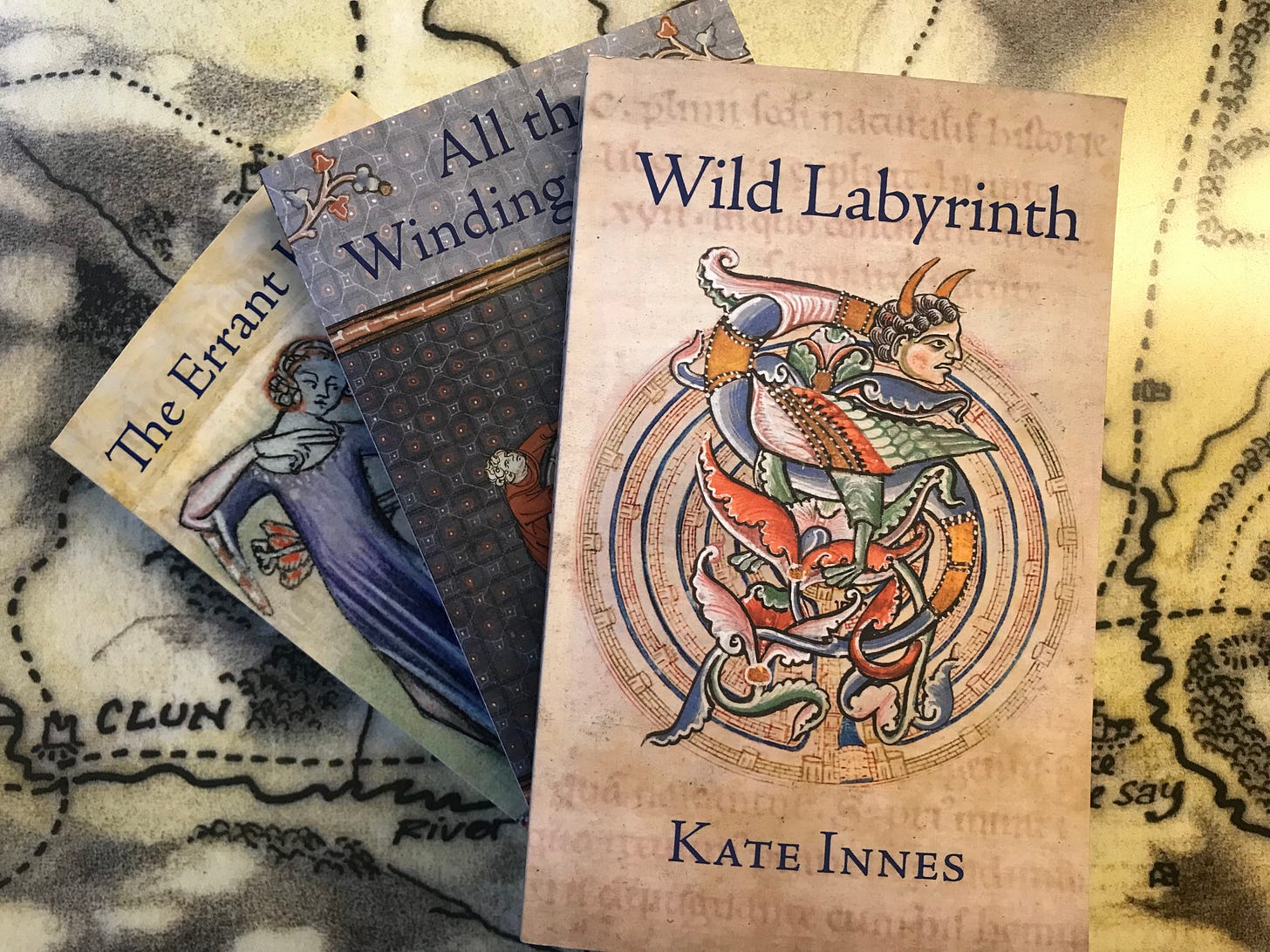INTRODUCING KATE INNES,
AUTHOR OF HISTORICAL FICTION (FOR ADULTS AND CHILDREN)
From time to time, I like to add someone else's story of how they came to be published. I think it helps for readers to discover what other writers have encountered, and what their journey to publication has been like.
All writers follow a different path, unique to them, and for some, it turns out that traditional publishers are not the ones opening the doors. In that case, as author Kate Innes discovered, self-publishing lead to her opening the door for herself.
AUTHOR KATE INNES
When you read the historical novels of Kate Innes, it is not difficult to see the traces of her background that lead to her writing about the past.
She studied archaeology at the University of Southampton, and has an MA in Museum Studies. There is something about the past, and the glimpses of its untold stories that grabs her imagination. Museum objects, whether they be a humble comb or elaborate jewellery, makes her think of the person who used that object. What might their story have been?
Despite her ability to weave a wonderful story out of the fragments of history, when she began, the publishing industry just didn't know what to make of her.
They said it was the wrong time period, (medieval) and it did not focus on famous people from that period, but rather “ordinary” people.
It didn't neatly fit into the genre slots they had in mind.
It was too fast paced for literary fiction; it had elements of a “slow burn” romance, but did not fit the romance formula.
In short, there was no marketing hook that they could use to promote the book, so they said, no thanks, we'll pass.
It became evident that if she wanted to get her work “out into the world” it would have to be up to her to do it herself.
Her first book, The Errant Hours, set in Shropshire, came out in 2015. It continues to sell, and she created an audible version of it as well.
EXCERPT:
“The Forester’s lodge and his gaol stood on weed-ridden ground. The stone was un-softened by weather and the narrow lancet windows were freshly cut. She went a little further. In the north wall was a thick timber door reinforced with iron.
The dog had stopped barking. It might be watching, waiting for her to go through
the wattle gate. Illesa retreated a few steps into the shade of the chestnut. The
smoke came from a low timber building across the cobbled yard. A stable door
growled on its hinges, as if someone had just opened it, but there was no one in
sight.
Her brother, or half-brother, was not likely to come into view of course. He hardly
ever did, and now he had managed to get himself locked up when he was meant to
be on his way home to her. He should have been back months before, in time for
their mother’s burial if not for her death.
Illesa shivered with sudden cold. Maybe he wasn’t here at all. Maybe Kit was
already dead, and they had fed his body to the dogs. She jerked her head to
dislodge the horror and crossed herself. Kit would not die here. If necessary he
would gnaw away at the stones with his teeth. Brother or half-brother, he was his
father’s son. That was certain. They were both as stubborn as mules.”
From The Errant Hours Chapter 1
As with any new venture, there was a lot to learn. The Errant Hours, 125,000 words long, took about 5 years to write. Later books gained momentum and took roughly two years or so. The research alone can take up to a year. She notes that the Plantagenets were big record-keepers, so that is a help, as well as other sources, such as history books, the internet, and PhD papers . She immerses herself in what life was like in that era before she starts writing.
Besides writing the story itself, there are other technical steps involved in getting the book to a professional standard. Each book goes to a group of beta readers who help her to discover any flaws in the storyline. At every stage, including the final copy edit, there is a process of fixing everything that is not quite right.
But, she says, “Time is the best editor of all.” Just letting the story sit without looking at it for a couple of months reveals snags that were not originally evident.
Her sixth book, which is her latest, AN ANCIENT HAUNTING, aimed at young readers, aged 10 plus, is about a young psychic who can pick up the essence of the past by handling objects. This psychometry gives the book a bit of a spooky feel.
EXCERPT:
“I walk into the shadowy library.
All is not as I left it.
The fragment from the tomb wall is on the desk where I placed it, and the scrap of
heavy paper with the hieroglyphic curse written in black ink is also there, looking
clumsy and childish. Copying the figures was tricky in the candlelight.
But around it is a thin, pale, indistinct circle. I approach the desk cautiously, peer at it, touch it with my fingertip. It’s fine golden sand. Desert sand. I rub it between my finger and thumb, and a shiver travels through my body. The sand lies on the leather desktop as if slipped from a palm between fingers, encircling my naive attempt at a curse.
I’m sure it frightens me more than Uncle Leonard, because he doesn’t know that I didn’t do it.”
From An Ancient Haunting Chapter 2
After the intense connection involved in the writing of a book, she finds it refreshing to change tack and write in an entirely different form. She finds each new change of direction a way of refreshing herself and defragmenting her brain.
Her latest endeavour had her turn to poetry, and she will join forces with artist Helen Garrett, who is exhibiting her work in the Bridport Arts Centre in Dorset.
Primordial Dance is on at the Bridport Arts Centre in Dorset from the 29th November to 20th December, 2025.
Find out more at https://www.bridport-arts.com/event/primordial-dance/
Kate loves to work with young people, finding their eagerness and excitement of story-telling so refreshing. She especially loves that they have not yet formed an inner critic, and are fearless in their approach to stories.
Kate will lead story writing workshops at the Shrewsbury Folk Festival, held 22-25 August, 2025.
The first workshop is VOICES FROM THE EARTH, Friday, 22 August, suitable for ages 12 and up. “Helping you create your own folktale inspired by some of the mysterious and ancient sites in the UK.”
The second workshop is FAIRY TALE WRITING WORKSHOP, on Sunday, 24 August, suitable for ages 8 and up. “A safe and creative space to share your own fantastic tales.”
These workshops are free for all festival ticket holders. For information, contact Kate Innes directly via her website:
As her career has evolved, she has found it best to “Never say never!”
Many of the connections she has made in the writing world have lead to projects she did not plan. They just arrived!
A happy result of finding her voice in the literary world.
Here are some links to Kate Innes's books and the audio version:
Signed copies: https://www.kateinneswriter.com/shop/
From Blackwells online: https://blackwells.co.uk/bookshop/search/?format=&keyword=Kate+Innes
Ebooks from Amazon: https://www.amazon.co.uk/stores/Kate-Innes/author/B018GIKJ8U?ref=ap_rdr&isDramIntegrated=true&shoppingPortalEnabled=true
The Errant Hours is available as an audio book through Audible.
The Arrowsmith Trilogy by Kate Innes






I'm working with the medieval period now - not nearly as well as these excerpts, though! Thanks, Rose, for sharing such an interesting author with us. And thanks Kate for spending time on your research and material. I am putting you on my TBR list (and probably bumping you up to the top!).
Rose show cased yet another author, she has really demonstrated her generosity and flair for understanding Kate's work.